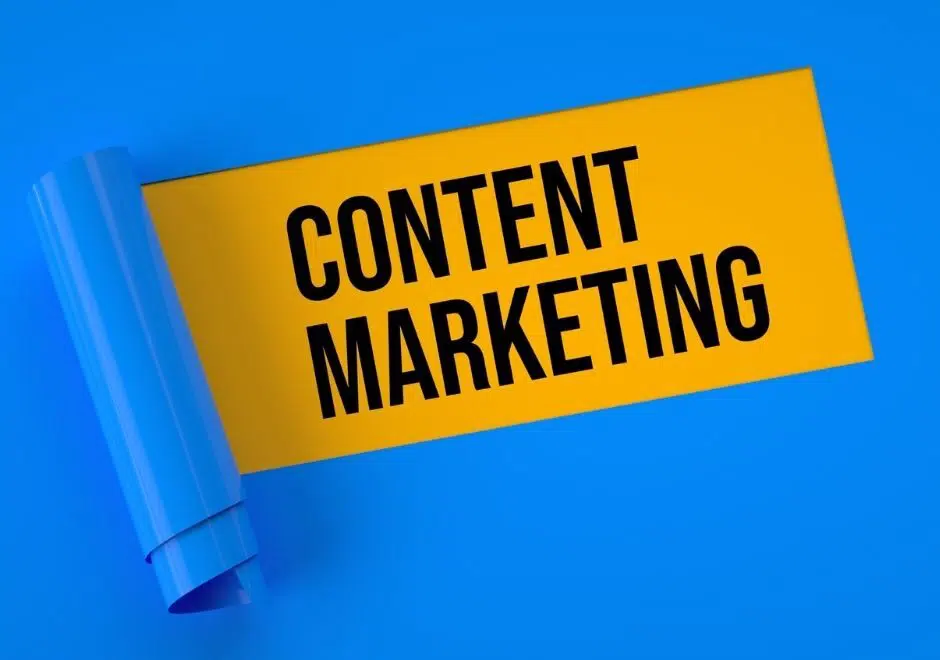Ever since Bill Gates said that “content is king” in 1996, that hasn’t changed a bit and a content marketing strategy for small business is like oxygen – it helps keep your businesses online presence alive! Did you know that, as of 2020, 70% of marketers were actively investing in content marketing, and 24% planned to increase their content marketing investment during the year?
These statistics bear testimony to the fact that content marketing is vital for all businesses alike, but even more so for small businesses. If you’re wondering why, it’s because content marketing is one of the highest ROI-generating marketing strategies when it comes to every dollar spent. For a small business owner, that’s exactly what you need when budgets are limited, isn’t it?
All of this talk is great, but content marketing, as a term, is thrown around so frequently to the extent that it sometimes loses its meaning. Even more, it’s hard to know how to apply it to your own small business when everyone is talking about it from their own perspective, right?
For that precise reason, this article will introduce you to the basics of content marketing and how a content marketing strategy for small business should look like. So without further ado, let’s get into it!
What Is Content Marketing?
Let’s start from the very basics and talk about what content marketing is in its essence. According to the Content Marketing Institute, “Content marketing is a strategic marketing approach focused on creating and distributing valuable, relevant, and consistent content to attract and retain a clearly-defined audience — and, ultimately, to drive profitable customer action.”
In other words, content marketing is marketing that involves creating and sharing content (such as videos, blog posts, social media posts, infographics, ebooks, case studies, and more) without explicitly promoting your business or brand. Instead, it focuses on establishing strong relationships with your target audience through valuable content, which then converts into sales.
What Is A Content Marketing Strategy?
Now that you’re fully aware of what content marketing is, let’s go a step further to discuss the content marketing strategy. Ultimately, your content marketing strategy should help you achieve your business goals, which means as a small business owner, you need to pinpoint what your goals are right now.
What are you hoping to achieve both in the near future and in the long term?
Once you make up your mind about that, your content marketing strategy for your small business should be the blueprint that details how you’ll successfully accomplish your goals, of course, using content as the means to that end.
In a nutshell, your content marketing strategy is the “why” behind every content piece you’ll publish. Why are you creating this content type in particular? Who are you trying to engage with through your content? What are you trying to say through it? Each of these questions should have a specific answer that feeds into your overall business goals.
Generally, small businesses have one of four goals: more conversions, increased brand recognition and awareness, higher website traffic and rankings for SEO purposes, or increased customer engagement.
Pro Tip: To commit to your content marketing strategy, don’t just specify it but also document it.
What Should a Content Marketing Strategy for Small Businesses Include?
So we’ve agreed that your content marketing strategy will outline your top business goals and objectives and how you’ll use content to achieve those goals while factoring in the needs of your customers. But where do you go from here? How do you go about writing it up?
While there’s no “one-size-fits-all” template for a content marketing strategy for small businesses, there are a couple of elements your strategy must include for it to be effective. Here are the most important ones.
1. The Reason Behind Your Choice of Content Marketing
First things first, down the road, you might get hesitant about content marketing if it takes a long time to show results. For that reason, note down why you chose content marketing in the first place and account for any possible risks. Since you’re listing risks, also list what success will look like!
2. Your Content Marketing Framework
“Plan the work, and work the plan.” This is where you’ll be exceptionally specific about what your content plan will look like, its purpose and what it should achieve, the unique value you aspire to convey, and what obstacles you may encounter. If it helps, you can even develop a content marketing mission statement to put things into perspective.
3. Your Buyer Personas and Content Maps
To create content that fulfills your target audience’s needs, you need to know who your target audience is to begin with, right? That’s an integral part of any small business’ content marketing strategy. Be as detailed as possible about who you’re creating content for, their needs, and how they can engage with your content.
Ideally, consider how their engagement will look as they pass from one stage of the buyer’s journey to the next so that you’d be able to craft content that moves them closer to their goals and meets them right where they’re at. Be very careful about content types, too!
4. All About Your Brand/Business
At this point, you know why you’re choosing content, the purpose of your content marketing efforts, and who you’re targeting. Now’s the time to get to the nitty-gritty of what your content will look like in relation to your brand. You’ll want to tell your business story through each content piece, but you won’t do so directly.
Instead, you’ll do it through the tone you’ll use in your content, the messages you’ll deliver and how they position you in the industry, how you differentiate yourself from the competition, your mission, and most importantly, the values you stand for. That way, you ensure that your content is aligned with not just your goals but also your branding as a whole.
5. Distribution Channels
Last but not least, after you’ve done all the work, think of which platforms you’ll use to distribute your content to showcase it! Of course, you don’t have to choose just one channel – in fact, most businesses aim for a combination of channels.
But if you choose to do so, remember to make sure that the messaging is aligned, consistent, and cohesive across all customer touchpoints. If you don’t know how to choose your distribution channels, an excellent place to start is to let the content types guide you!
For instance, if you’re developing newsletters, email would be the way to go, whereas if you’re creating a case study, your website would be the best fit! Also, it’ll depend on where your audience is mostly active, which you’ll begin to pinpoint once you start collecting data and statistics on your content performance. Naturally, focus on the ones with the highest ROI.
Why Should Your Small Business Do Content Marketing?
Since content marketing can be overwhelming, it’s essential to remind yourself why content marketing is vital for small businesses.
For one, the more you produce timely, relevant, and high-quality content, the more your business becomes an authority in its industry. When that happens, not only do your existing customers’ trust and grow loyal to your business, but search engines also grow fond of you, and you know what that means – more traffic, more engagement, and eventually, more conversions!
On top of that, content marketing enables you to always be in tune with your customers, staying up-to-date with their latest pain points, challenges, needs, and desires. When you have this kind of connection with your target audience, you’re better able to identify how you can enhance or introduce products and services that can solve such challenges, translating into sales!
Last but not least, content marketing is relatively cheaper than any other marketing tool, and the best part is that you can leverage content across multiple channels. For instance, with a blog post, you can take snippets of it to post on social media and link back to the blog. Similarly, if you create a video, you can incorporate it within a blog and also share it on social media.
In doing so, you’re saving money but also the time that would’ve been spent creating content for different platforms separately!
Final Words: Don’t Be a Needle in a Haystack - Invest In Content Marketing
When it really comes down to it, although you’re a small business, the market isn’t by any means small. Every day, there are new market entrants to every industry. To stand out from the crowd and effectively reach your audience, you’ll need a solid content marketing strategy to empower you to showcase what you have to offer.
Go ahead and start developing your winning content marketing strategy, and remember to always keep your customers and their needs front and center!
Keeping our prices low and content free with affiliate links








